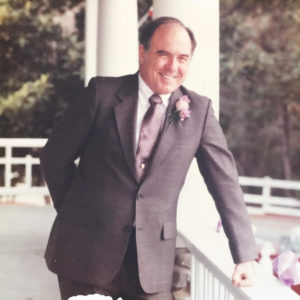 Noted physicist and entrepreneur Charles E. “Chuck” Bryson passed away on November 25, 2022.
Noted physicist and entrepreneur Charles E. “Chuck” Bryson passed away on November 25, 2022.
Chuck founded several startups and was instrumental in the development and applications of surface science technology in engineering. He developed multiple electrical charge control methods and technical innovations, filing 16 patents and publishing numerous articles.
He was born September 11, 1940, and received his BS in Electrical Engineering from Texas A & M at College Station in 1964 and his PhD in Physics from the University of Missouri, Rolla, in 1973. He proudly served the Army until 1964.
In 1973, Chuck joined Hewlett Packard in Palo Alto, CA, where he developed the first diode array UV-Vis optical spectrometer. He also defined, developed, and patented a dual rotary and linear magnetically-driven transfer arm for UHV systems.
In 1977, Chuck founded Surface Science Laboratory/Kevex in Mountain View, CA, one of the first commercial analytical laboratories specializing in surface science techniques. He developed new ways to control the electrical potential on the surfaces of insulating materials and was co- inventor of the first small spot ESCA. He also invented a fast, special electron analyzer for AES applications suitable for adding to other instruments such as SEMs.
Chuck continued to develop commercial processes in electron spectroscopy application, including developing instrumentation for NASA as founder of Apparati Engineering in Mountain View, CA. In 2013, he won the National Aeronautics and Space Administration Government Invention of the Year for his CheMin X-Ray Diffraction/X-Ray Fluorescence Instrument. This flight-qualified instrument provided for the first time “the ability to perform quantitative analysis of minerals present in a sample of rock or soil in a spaceflight qualified small payload.” CheMin returned the first on-site definitive, quantitative meteorological analysis of Mars, identifying the first habitable environment on another planet. As a result, discussion of Mars now revolves around interpretation of how minerals formed, rather than a discussion of what they might be.
In 2012, Chuck turned his attention to biomedical applications, joining Arigos Biomedical, Inc., in Santa Clara, CA.
Throughout his career, Chuck was an active fellow in the American Vacuum Society, serving on the Board of Directors and as Chair of the Exhibit Committee. He was also co-developer of Surface Science Spectra Journal from 1973-1977.
Chuck is survived by six children and nine grandchildren. A celebration of life will be held in Westcliffe, Colorado, in the spring of 2023.
